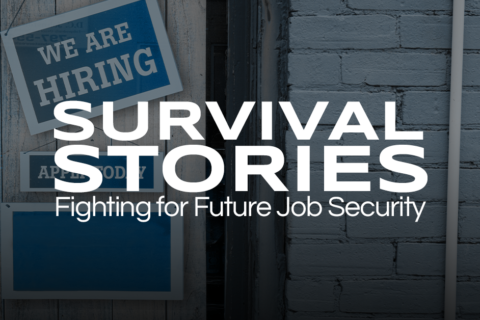Pioneering Pay and Transparency: How Til Friday Trucking Defies Industry Norms
A Unique Spin on the Trucking Game Til Friday Trucking, a North Carolina-based small fleet, is carving out its niche in the logistics industry by putting its employees first. The company guarantees its drivers daily pay whether they have routes to run or not, and ensures they’re home almost every night. While the trucking industry often prioritizes productivity over work-life balance, Til Friday Trucking has switched gears, doubling its fleet size in just the last five years. Beating the Big Boys Led by Michelle Hefner, the company has faced stiff competition from larger trucking firms. Even in the increasingly difficult landscape of declining rates and tighter bids, Til Friday has continued to hold its ground. While they have lost some business due to the fierce bidding environment, Hefner has stayed the course and continued to be proactive about seeking out other local companies for potential business. The Secret Sauce: Customer Engagement Hefner’s transparent and honest approach has become the key to maintaining their strong customer relationships. She shares rate information openly with employed drivers and owner-operators. Hefner believes this exceedingly unique brand of transparency not only keeps her team on board but also allows them to feel fairly compensated for their efforts. A Family of High-Quality Service Customer satisfaction is of the highest priority, especially when Til Friday hauls critical materials like packing and recycled products for their big-name clients. Testimonials from satisfied clients prove that the company offers excellent service and reliability. Despite not being the primary carrier in some bids, Til Friday still gets business, showcasing the customer’s faith in their service. Financial Resilience in Challenging Times The company also ensures its operators have a chance for predictable shifts and income. If a driver is available and willing to work but there’s no freight for them, they are guaranteed $100 for the day. This employee-focused strategy has contributed to the company’s ability to navigate through many of the financial hiccups hindering other firms, things like fluctuating fuel prices, without having to furlough employees. A Tight-Knit Team Another unique aspect of Til Friday is that they’re not in the business of recruiting drivers. Instead, their small fleet consists only of people Hefner knows personally, like her husband and high school friends. This creates a further sense of trust and loyalty among the team, further fueling their reputation for reliability and service in the trucking and logistics sectors. A Slow and Steady Approach to Success Hefner emphasizes taking a cautious approach to growth, focusing on maintaining high standards rather than rapid expansion. The company’s philosophy, to work only until Friday and offer quality over quantity, has proven successful so far. By sticking to their core values, Til Friday Trucking has solidified its standing as a reliable, employee-first logistics provider in an increasingly competitive market. Before You Go… This exploration of Til Friday Trucking’s unique business model brings to light new ideas as to what makes trucking firms successful in challenging environments. Their focus on employee welfare, transparent customer engagement, and financial resilience serves as valuable lessons for across all sectors, and even beyond logistics. The tight-knit nature of their team and cautious approach to growth showcase the evolving priorities within the trucking and logistics sectors. With that, we’d love to know, what are your thoughts on these unique approaches to common industry challenges? We encourage you to share your thoughts and insights in the comments section below. If you made it to this part of the article, we’d just like to take a moment to thank you for taking the time to read this weekly recap. Be safe out there and as always, If you’re in search of CDL A, B, or warehouse positions, check out our open positions. And if you need staffing solutions for commercial driving or industrial positions, be sure to explore our offerings.





Recent Comments